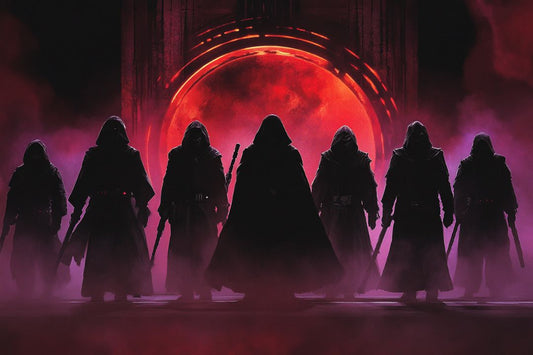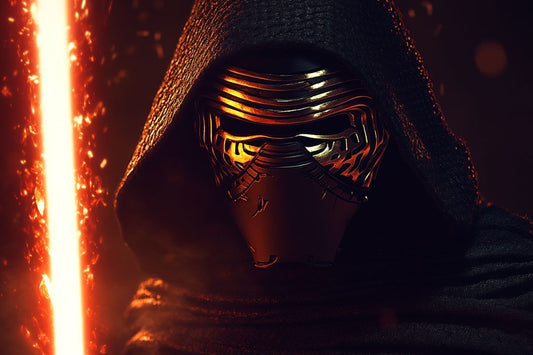The lightsaber, the iconic weapon of the Jedi and the Sith in the Star Wars universe, is much more than just a simple laser sword. It represents a profound connection to the Force and serves as a reflection of a wielder’s skill and personality. Throughout the saga, we witness various lightsaber combat forms, each with its unique attributes and adherents. Join us as we delve into the world of lightsaber forms and discover the Jedi and Sith who mastered them.
Form I: Shii-Cho - The Foundation of Jedi Training
Shii-Cho, also known as Form I, is the oldest and most fundamental lightsaber combat form. Almost every Jedi initiates their training with Shii-Cho, relying on its basic yet effective techniques. The style involves a flurry of fast strikes, making it appear aggressive. However, true mastery of Form I comes with inner peace, allowing a Jedi to use the lightsaber as an extension of their very being. Bootable practitioners include Jedi during the Clone Wars and even some Sith, though they often prefer more aggressive forms.
Form II: Makashi - The Elegant Duelist’s Choice
As lightsabers became more common among Jedi and Sith, Form II, known as Makashi, emerged as a graceful and precise form suited for one-on-one duelling. Focused on controlled strikes rather than brute strength, Makashi accommodates unique lightsaber designs like crossguards or second Shoto blades. Count Dooku, a formidable duelist, was a master of Makashi. Its decline in popularity coincided with the belief that the Sith had been eradicated.
Form III: Soresu - The Art of Deflection
Developed to counter the growing threat of blasters, Form III, or Soresu, specialises in defensive manoeuvres and blaster bolt reflection. Jedi during the prequel trilogy were extensively trained in Soresu, making it a crucial aspect of their combat skills. Obi-Wan Kenobi and Kanan Jarrus are well-known practitioners of this form, demonstrating their efficiency and adaptability in battle.
Form IV: Ataru - Force-Assisted Acrobatics
Ataru, also known as Form IV, relies heavily on Force-acrobatics and swift strikes. It is best suited for Jedi with a strong connection to the Force, allowing them to perform dazzling aerial manoeuvres and overwhelm opponents quickly. Yoda showcased Ataru’s prowess during his duel with Count Dooku in Attack of the Clones. However, its aggressiveness had made some of its practitioners vulnerable to the dark side.
Form V: Shien & Djem So - Striking a Balance
Form V emerged as an adaptation of Form III, integrating offensive and defensive capabilities. Shien excels at distance, swatting back blaster bolts, while Djem So focuses on blade-to-blade combat, often employing a reverse grip. Anakin Skywalker favoured this form, combining elements of both Shien and Djem So. Some Jedi questioned its adherence to Jedi principles, as it bordered on using the Force offensively.
Form VI: Niman - The Synthesis of Styles
Form VI, known as Niman, was developed as a synthesis of previous lightsaber forms. Emphasising balance in the Force, allowed Jedi to defend themselves and deliver justice without succumbing to the allure of power. Darth Maul’s unorthodox use of Niman demonstrated its versatility, blending lightsaber combat with the Force. Many Jedi who prioritised wisdom and non-combat pursuits favoured this form.
Form VII: Juyo (or Vaapad) - Embracing Inner Emotions
The most controversial of the lightsaber forms, Juyo, encouraged Jedi to embrace their emotions and channel them into an aggressive assault. Due to its potential dangers, it was banned by the Jedi for a long time. Mace Windu, however, refined Juyo into Vaapad, controlling his inner darkness and using it to fuel his relentless pursuit of justice. He was cautious about teaching this form, fearing others might fall to the dark side.
The Legacy of Lightsaber Forms
After the tragic events of Order 66, much of the Jedi Order’s knowledge and wisdom concerning lightsaber forms vanished. Surviving Jedi Like Cal Kestis and Ezra Bridger resorted to combining fragments of all seven forms. Though their improvisation often left them vulnerable in some aspects of combat, their determination and resourcefulness allowed them to persevere.
The lightsaber forms in Star Wars are a testament to the rich lore and depth of the Jedi and Sith traditions. Each form represents a unique aspect of combat philosophy and Force connection, providing a glimpse into the diverse skill sets of lightsaber wielders across the galaxy. As we continue to explore the Star Wars universe, let us remember the artistry and symbolism behind the lightsaber, an elegant weapon for a more civilised time. May the Force be with you.



